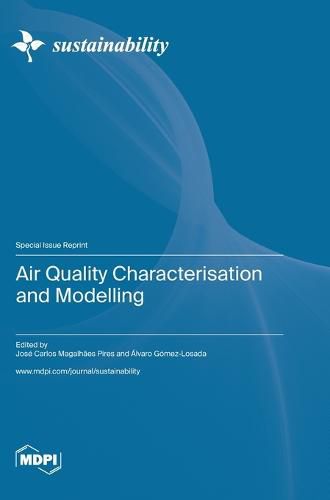Readings Newsletter
Become a Readings Member to make your shopping experience even easier.
Sign in or sign up for free!
You’re not far away from qualifying for FREE standard shipping within Australia
You’ve qualified for FREE standard shipping within Australia
The cart is loading…






This title is printed to order. This book may have been self-published. If so, we cannot guarantee the quality of the content. In the main most books will have gone through the editing process however some may not. We therefore suggest that you be aware of this before ordering this book. If in doubt check either the author or publisher’s details as we are unable to accept any returns unless they are faulty. Please contact us if you have any questions.
Air pollution is a mixture of particles and gases, which can reach unsafe concentrations for human health, the environment, vegetation, and materials. It has become one of the main sustainability issues and a concerning topic in atmospheric science. According to the World Health Organization (WHO), 90% of the world's population lives in highly polluted environments, and about 7 million premature deaths are caused yearly by outdoor and indoor air pollution. The combination of fast-growing populations, transport, fossil fuels, and biomass burning leads to pollution levels being especially high in some urban areas. Agriculture and natural phenomena are also important sources of pollution, underscoring the multi-faceted and transboundary nature of air pollution. The monitoring and understanding of the temporal and spatial behaviours of air pollutant concentrations are essential for both the implementation of air quality policies and the definition of effective measures to mitigate air pollution and its effects. Quantifying and monitoring exposure to air pollution in terms of public health is also a critical component in policy discussion. This reprint presents recent research activities concerning the characterization of air pollution and the applied modelling approaches.
$9.00 standard shipping within Australia
FREE standard shipping within Australia for orders over $100.00
Express & International shipping calculated at checkout
This title is printed to order. This book may have been self-published. If so, we cannot guarantee the quality of the content. In the main most books will have gone through the editing process however some may not. We therefore suggest that you be aware of this before ordering this book. If in doubt check either the author or publisher’s details as we are unable to accept any returns unless they are faulty. Please contact us if you have any questions.
Air pollution is a mixture of particles and gases, which can reach unsafe concentrations for human health, the environment, vegetation, and materials. It has become one of the main sustainability issues and a concerning topic in atmospheric science. According to the World Health Organization (WHO), 90% of the world's population lives in highly polluted environments, and about 7 million premature deaths are caused yearly by outdoor and indoor air pollution. The combination of fast-growing populations, transport, fossil fuels, and biomass burning leads to pollution levels being especially high in some urban areas. Agriculture and natural phenomena are also important sources of pollution, underscoring the multi-faceted and transboundary nature of air pollution. The monitoring and understanding of the temporal and spatial behaviours of air pollutant concentrations are essential for both the implementation of air quality policies and the definition of effective measures to mitigate air pollution and its effects. Quantifying and monitoring exposure to air pollution in terms of public health is also a critical component in policy discussion. This reprint presents recent research activities concerning the characterization of air pollution and the applied modelling approaches.